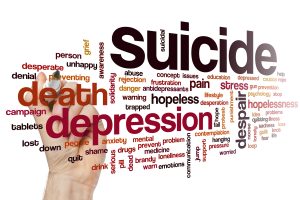Recognizing Signs, Providing Support, and Connecting to Essential Resources During Suicide Prevention Month

Talking about mental health can be tough, but it’s a conversation that saves lives. In a world where many still view mental illness as a taboo subject, normalizing discussions around it is critical for ensuring people in crisis get the help they need. When we break the stigma, we open doors to understanding, empathy, and support for those who may be struggling.
In recognition of Suicide Prevention Month, we want to highlight the warning signs of suicide, offer practical steps to assist those in need, and share local and national resources available to support individuals and their families.
Why Breaking the Stigma Matters
Mental health struggles often go unnoticed because of the shame associated with talking about them. Many people fear being judged or misunderstood, and this silence can prevent them from seeking help. Mental health issues are often overlooked until the situation becomes critical. By talking more openly about mental health, we can reduce feelings of isolation and create a supportive environment where people feel safe to reach out before it’s too late.
When mental health issues are addressed early, the risk of suicide can be greatly reduced. Recognizing the warning signs and knowing how to respond can make all the difference in saving a life.
Understanding the Statistics
Suicide in the U.S. is a major public health issue, with rates steadily rising in recent years. According to the American Foundation for Suicide Prevention (AFSP), more than 48,000 people died by suicide in 2021, making it the 11th leading cause of death overall in the country.
Here are some key statistics about suicide in the U.S. based on the latest available data:
-
Overall rate: In 2021, the suicide rate was 14.0 per 100,000 individuals. This rate has increased by 30% since 1999.
-
Gender: Men are more likely to die by suicide than women, accounting for nearly 79% of all suicide deaths. However, women are more likely to attempt suicide.
-
Age: Middle-aged adults (ages 45-64) and older adults (85 and older) have some of the highest suicide rates, but suicide is also the second leading cause of death among young people aged 10-34.
-
Method: Firearms are the most common method of suicide, accounting for more than half of all suicide deaths.
-
Race and ethnicity: Suicide rates vary across racial and ethnic groups. American Indian and Alaska Native populations experience the highest rates, followed by non-Hispanic whites. However, suicide rates among Black youth have increased significantly in recent years.
These statistics underscore the importance of increasing access to mental health resources, reducing stigma, and fostering supportive environments for those at risk.
Recognizing the Warning Signs of Suicide
People in crisis often exhibit signs, though these may vary from person to person. It’s important to know what to look for. Common warning signs of suicide include:
-
Talking about wanting to die or expressing a sense of hopelessness
-
Withdrawing from family and friends or feeling like a burden to others
-
Experiencing severe mood swings or showing signs of depression and anxiety
-
Engaging in risky or reckless behaviors like excessive drinking or substance use
-
Giving away belongings or making plans for the future as though they won’t be around
-
Sudden changes in behavior, such as being unusually upbeat after a long period of depression
If you notice these behaviors in someone, don’t ignore them. Asking someone directly if they are thinking about suicide won’t plant the idea in their head. In fact, it can provide them with relief by giving them an opportunity to share their feelings.
How to Respond
If you suspect someone is at risk of suicide, here are steps you can take to help:
-
Start the conversation: Show empathy and listen without judgment. Ask them, “Are you thinking about hurting yourself?” Sometimes, just knowing someone cares can be enough to ease their burden.
-
Encourage them to seek help: Suggest reaching out to a mental health professional or calling a helpline. You can offer to help them find resources or accompany them if they need support.
-
Do not leave them alone: If you believe they are in immediate danger, stay with them until professional help arrives or they are safe.
-
Contact emergency services: If they have a plan or seem like they might act on it soon, call 911 or your local emergency number for immediate help. You can also encourage them to use crisis hotlines or text services.
Local and National Resources
For residents in the Carthage area, Carthage Area Hospital (CAH) offers comprehensive mental health services through their outpatient Behavioral Health Unit. Whether someone is struggling with anxiety, depression, or other mental health issues, CAH provides expert care in a compassionate environment. Additionally, Claxton-Hepburn Medical Center (CHMC), also a member of the North Star Health Alliance, provides outpatient behavioral health services at the CHMC Wellness Center and operates the region’s only inpatient Children’s & Adolescent Behavioral Health Unit. These services are available to those in the St. Lawrence region or individuals needing additional support, ensuring that all community members have access to the care they need.
Additionally, there are national resources available 24/7 to offer support:
-
National Suicide Prevention Lifeline
Phone: 1-800-273-TALK (1-800-273-8255)
Website: suicidepreventionlifeline.org
This free, confidential service is available around the clock for anyone in distress, as well as for loved ones who may need guidance on how to help -
Crisis Text Line
Text: HOME to 741741
If speaking on the phone feels overwhelming, you can reach out to the Crisis Text Line for free, 24/7 support via text message.
-
Text: Any message to 988 to and a counselor from a Lifeline crisis center will respond.


